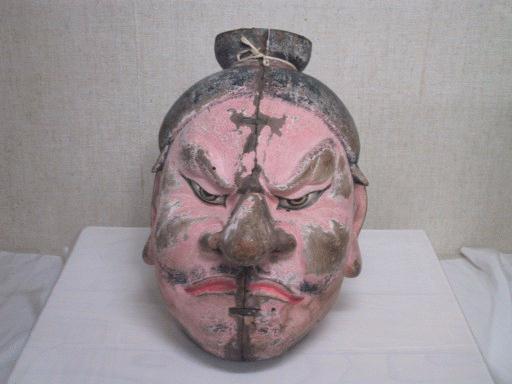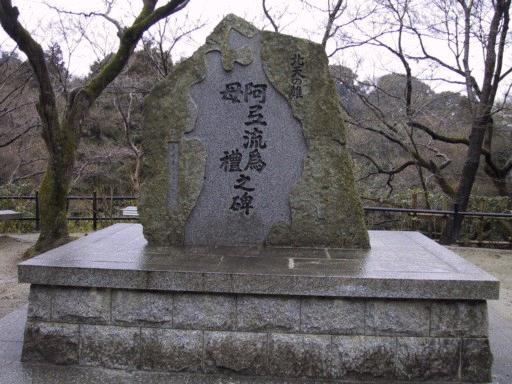This website is created by Eishiro Ito, a Joycean scholar teaching English at Iwate Prefectural University, Japan. The site mainly features James Joyce, literature and comparative cultural studies between Ireland and the Tohoku District of Japan while it also provides useful information for the IPU students who take Eishiro Ito's English courses. In the educational aspects of this website, one individual page is assigned to each of Ito's IPU English Courses which, with different materials, set for the students divided into each class with the results of testing their English proficiencies. I especially lay stress on the importance of explaining the things, the events and the feelings (supposedly or seemingly) peculiar to the Japanese to foreigners in English (if they can speak English), because I believe that failure of enough explanation for various "Japanese" things often make Japanese people get into difficulties in communicating with foreigners. Furthermore, people in the Tohoku District, especially in Iwate, more or less seem to have the tendency not to talk or not to explain enough for other people. So some of the webpages are used to suggest the students how to explain the "Japanese" things and the "Iwate" things in English, although, I believe, they must provide some useful information for foreigners.
You might think it is somewhat strange to deal with
James Joyce and Japanese studies in the same website, but it is very
appropriate for me if you recognize that I have mainly been studying
James Joyce in Morioka, northern Japan for years. As a scholar of James Joyce
who kept describing Dublin throughout his life, I gradually come to think it
necessary for me to assure my sense of locality. Otherwise I might be
fool enough to fear that the European cultures Joyce described might
overbear my Japanese identity and my locality in Iwate. I
love Joyce's works and I love his European world, but I do not want to lose my identity
and my locality by studying his works. I believe that I can contribute to the international communitity
of James Joyce studies from some East Asian perspectives.
In other words, I would like to study James Joyce clearly showing the point where I stand.
I learned the method from some Japanese painters in the early nineteenth century including Hokusai Katsushika and
Hiroshige Ando. In fact, it is very interesting for
me to compare Iwate, the Tohoku District and Japan (Far East) with
Ireland (Far West). I do hope that the visitors to this site
will enjoy my studies, observations and considerations.
The site contains 20,375 photos (as of January 1, 2022) degraded from the original to visualize
my research and interests for visitors with some artistic taste, so
this website is also
a kind of atelier. As you explore many pages of this site, you
will soon notice that I am interested in various aspects of "histories"
(not the "History") in the Joyce-related world, Ireland and Japan as
well as the United States and the United Kingdom.
James Joyce (1882-1941) is a cosmopolitan writer who was born in
Dublin and persistently continued to write about Dublin in the early
twentieth century, inspired by the international atmosphere in
Europe. He wrote
most of his works outside Ireland: Trieste, Zurich, Paris are three
major cities the Joyce family lived. In addition, his interest
was not limited to Europe: he was fascinated by various aspects of
world cultures including Asian cultures and religions. If you
read any page of Ulysses and Finnegans Wake very carefully, you
will recognize some elements of Orientalism and Asian cultures in
them. So it is a great mistake to regard Joyce just as an Irish or European
writer. Some of my articles in this site feature some Oriental
Eastern aspects of Joyce's works: go to the James
Joyce page.
There is no clear link between
"Aterui" and James Joyce, but they are among the most interesting
figures fascinating academics who are interested in "Cultural
Studies." I am currently working on Joycean studies and the
comparative studies between Ireland and the Tohoku District of Japan
because, it seems to me, there are many similarities between the two
regions. I am often carried away by impulse of comparing the
history of the United Kingdom and Ireland with that of the ancient
Japan and the Tohoku District called "Ezo" or "Emishi" (lit.
"barbarians [' territory]").
Since I was born and lived in Mizusawa Ward, Oshu City, Iwate, located
470 kilometers north from Tokyo, until I graduated
from Mizusawa High School, I am particularly interested
in and deeply sympathize with this local tragic hero. So I
renamed my webpage "Atelier Aterui," formerly known as "Mr. Duffy's
Study," after the hero's name in May 2004.
Aterui the "Tamo-no-kimi" ("Lord of Tamo [Hada, Mizusawa Ward, Oshu City]") (?-802) was the greatest chief of "Emishi" people of Isawa, the ancient Tohoku District, in the northern part of the main island of Japan. He lived in Isawa [now Mizusawa Ward, Oshu City, southern Iwate] and fought with Tamuramaro Sakanoue (758-811), the legendary Shogun leading the powerful army of "Yamato-Chotei," the ancient Japanese Government based in Nara and later in Kyoto at the turn of the ninth century (789-802). By that time the northern Japan now being called as "Kita-Tohoku" District was not included in "Japan: It was "Emishi" or "Ezo" (both use the same Chinese characters which literally mean "barbarian") Country free from the Japanese control. So Aterui and his tribes were not "Yamato" or the ancient "Japanese." Or in a strict sense, there were not regarded as the "Japanese citizens" by the ancient Japanese government. At that time, the government tried to territorialize all over the Japanese Isles (not yet including Hokkaido).
The government under the reign of the ambitious Emperor Kanmu (r.781-806) sent the army to the Tohoku District many times. But Aterui's platoon (about 500 soldiers) succeeded to beat Shogun Kosami Kino's troops of more than 50,000 Yamato soldiers in 789, which greatly surprised the Yamato-Chotei. They felt confounded dread of Aterui. Then Emperor Kanmu anointed Tamuramaro Sakanoue as the vice Shogun in 794 and he was promoted Shogun in 801 to fight with Aterui and his Chief General Staff More the "Iwagu-no-kimi" (lit. "Lord of Rock Armor"?; probably from Motai, Maesawa Ward, Oshu City). The details of their battle was unknown but "Emishi" was defeated in the battle as the fact that Yamato's new government house "Isawa-jo Castle" began to construct in 802. Hoping peace for the "Emishi" people, Aterui and More threw down their arms on April 15, 802 and were captured by Tamuramaro Sakanoue who safeguarded them to the Chotei in Kyoto. As the historical documents tell, Tamuramaro Sakanoue tried to persuade his superiors and Emperor Kanmu to save the two "Emishi" heros' lives to work for ruling the former "Emishi" Country, but they never agreed with him: Aterui and More were sent to Sugiyama, Kawachi-no-kuni (now Hirakata City, Osaka) to be beheaded on August 13, 802 (in the Chinese Lunar Calendar; September 18, 802 in the current Solar Calendar).
However, the tragedy of Aterui had just begun with his death: the Japanese people in later generations worshipped Tamuramaro Sakanoue as a guardian saint of Japan while they mistakenly regarded Aterui as a demon-like figure with an evil spirit and injured his human dignity in numerous folk tales. It was not so long ago that Japanese historians acknowledged that the descriptions of Aterui as "Acro-o" (more precisely pronounced "Akuro-o"; lit. "Lord of the Bad Road") and "Aka-gashira" ("Red Head") in many Japanese folk tales.

"Acro-o no Kubi" (Mask of Acro-o)
[Dedicated by Mitsukiyo
Fujiwara to Kashima-jingu Shrine in Ibaraki in
1664.]
(Courtesy of Kashima-jingu Shrine, Ibaraki)
He has been long believed to be a devil-like figure while his rival Tamuramaro Sakanoue left many heroic stories over Eastern and Northern Japan. Even in Oshu City, most people like Sakanoue. In my childhood, I was so confused between Aterui and "Acro-o." Especially I did not understand why Aterui was called as "Acro-o" (Lord of the Bad Road) and "Aka-gashira" ("Red Head") in the legends of Sakanoue from Fukui to Northern Japan. It was not so long ago that historians and the local people came to think that the descriptions of Aterui as "Acro-o" were not based on his real life: most of his legends was forged by the who blindly believed in Sakanoue Tamuramaro as the great hero after years without knowing the historical truth.

Otowa-san Kiyomizu-dera Temple, Kyoto

Haguro-san Dewa-jinjya Shrine, Mizusawa Ward, Oshu City
For further information of Aterui,
1. go to the "Aterui the Great Hero of Emishi" page.
2. go to the "Mizusawa" page.
3. go to the "Hiraizumi" page.
4. go to the "Hirakata, Osaka" page.
5. go to the "Kyoto East" page.